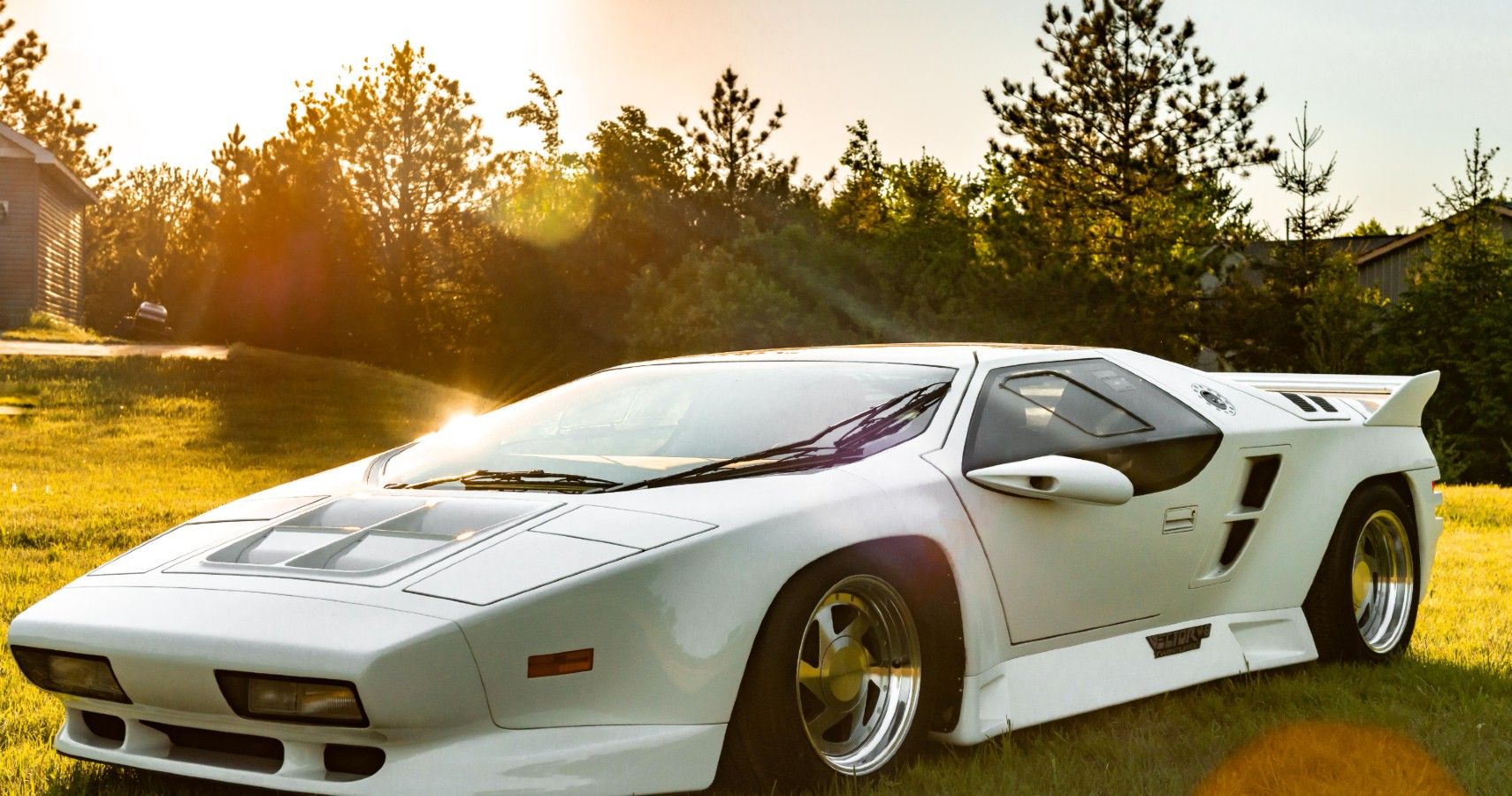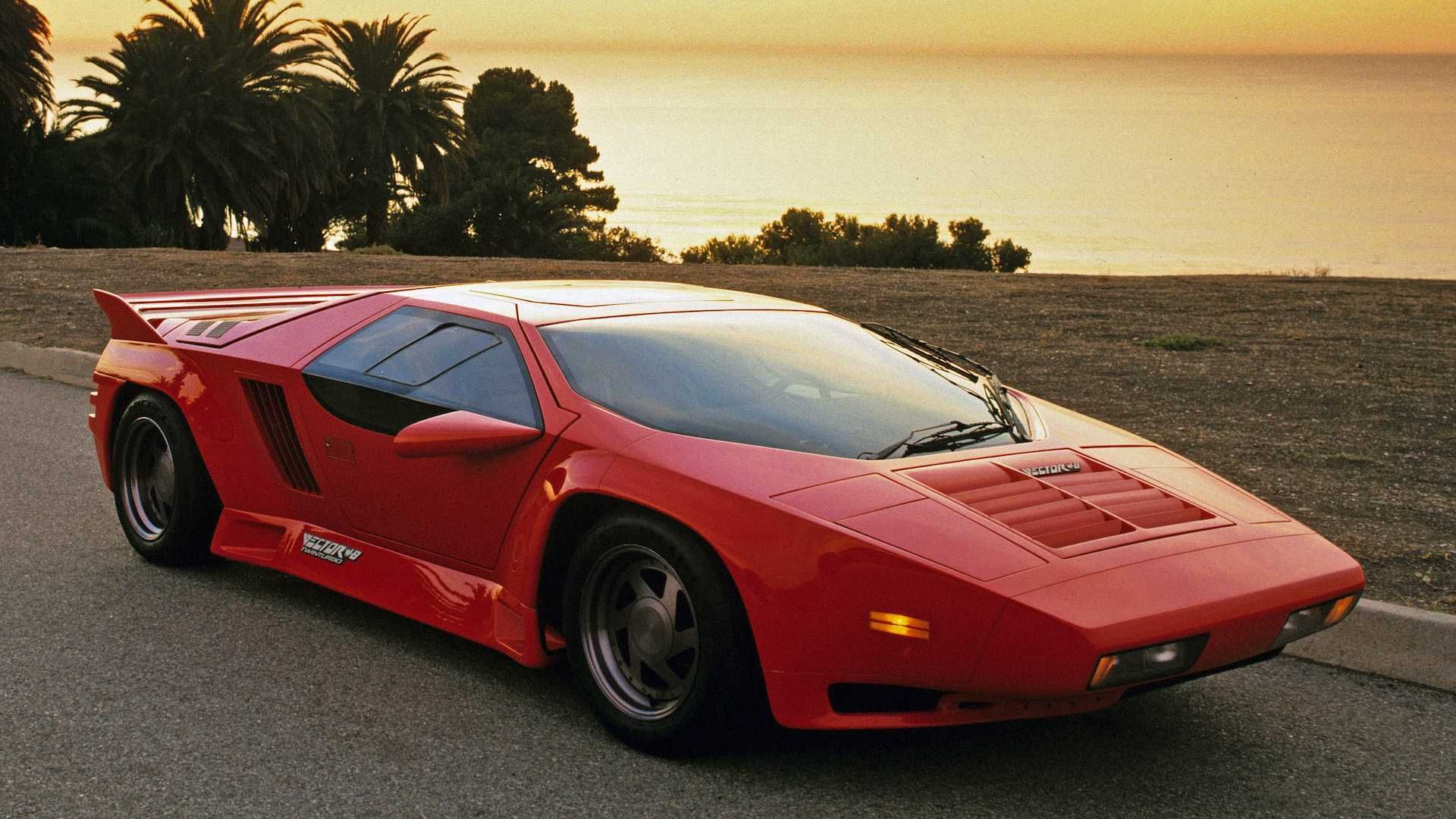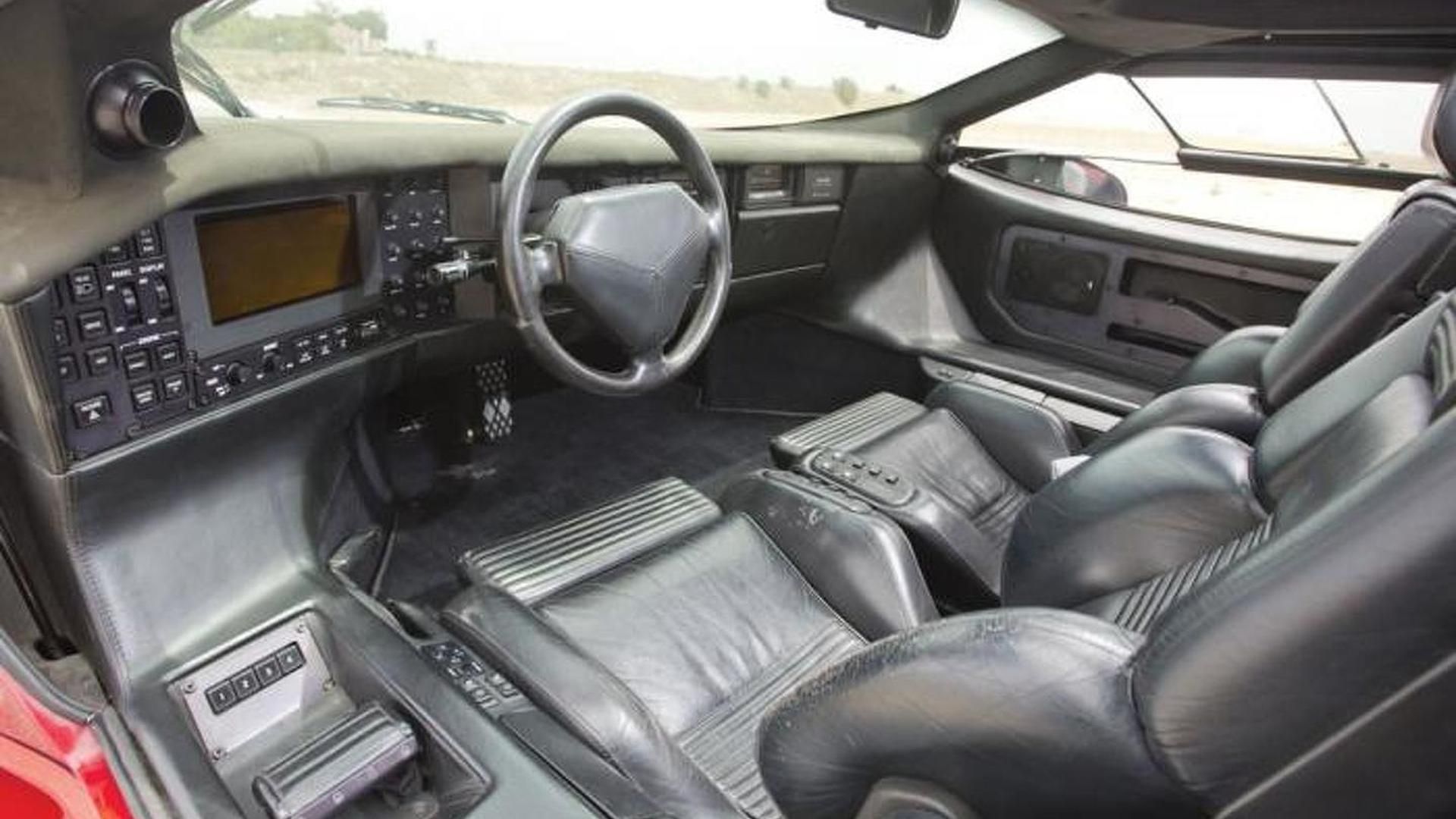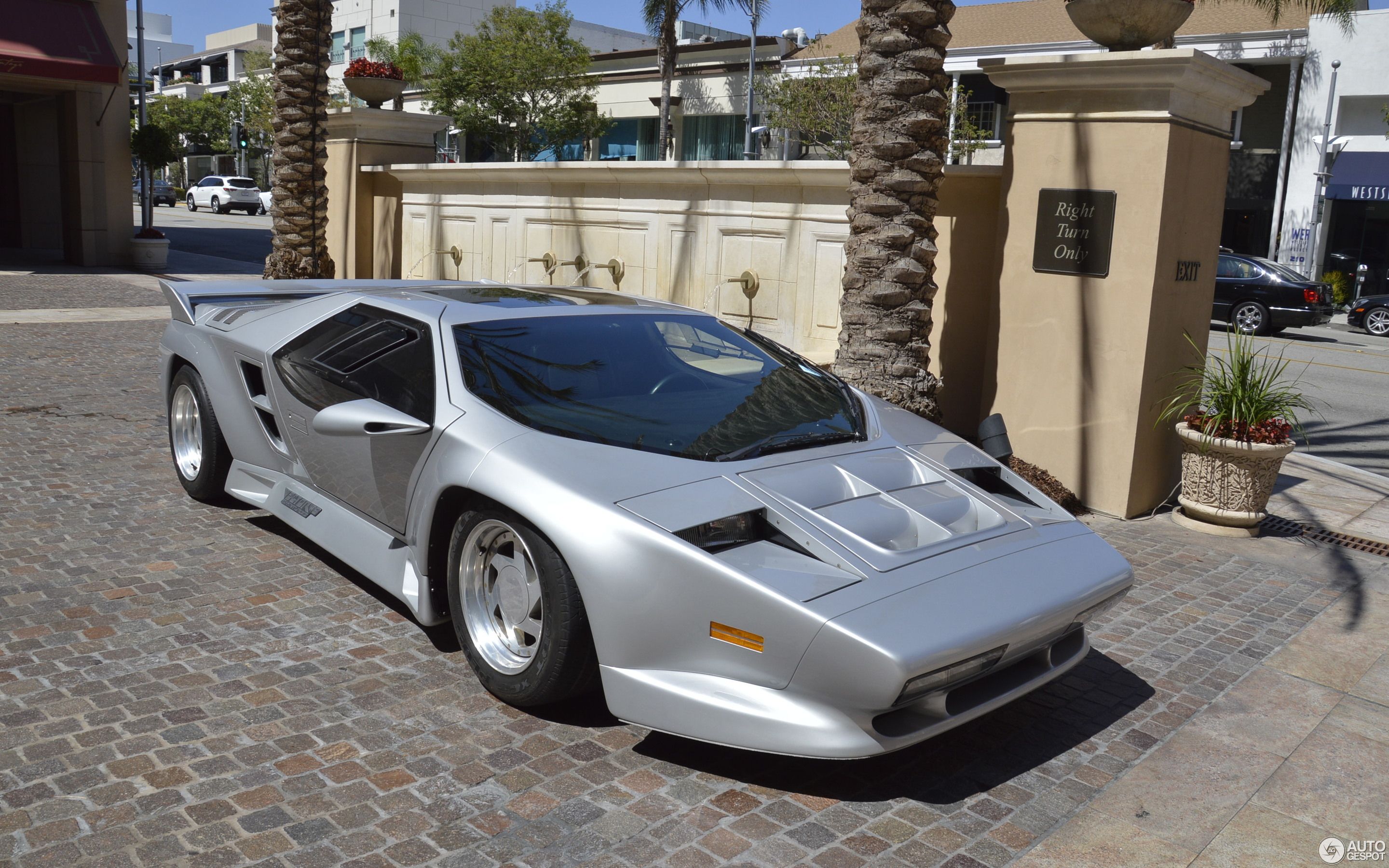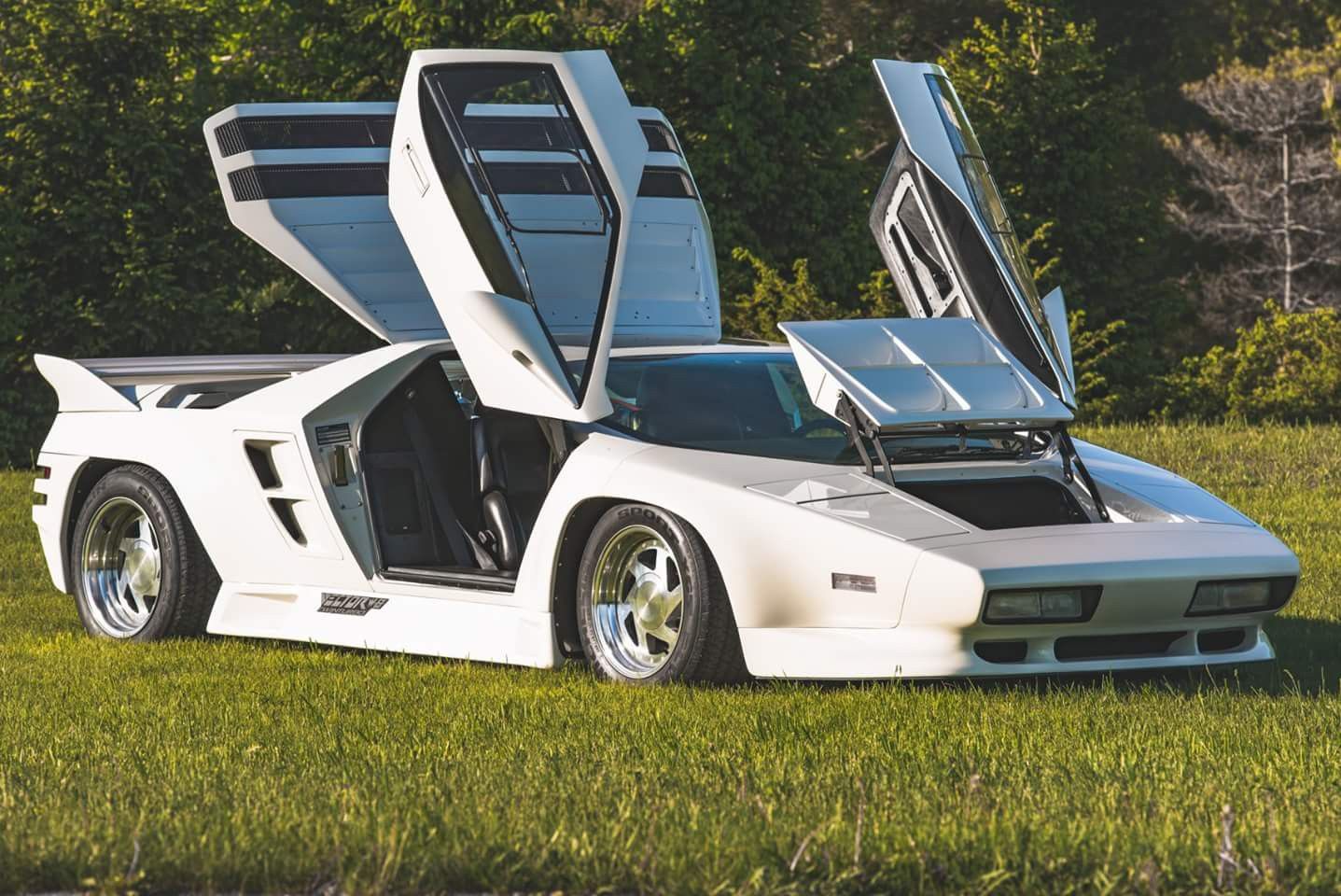In the 1980s, high-performance sports cars, now commonly referred to as supercars and hypercars, came from Europe. Car statistics website, Zero to 60 Times, lists the top 1980 supercars: 1985 Ferrari 288 GTO, 1988 Porsche 959, 1980 BMW M1, 1987 Lotus Esprit Turbo, 1989 Aston Martin V8 Vantage Zagato, 1986 Lamborghini Countach LP5000 QV, 1987 Ferrari F40, and the 1989 De Tomaso Pantera GT5. The only American car of the 80s era worthy of the supercar moniker is perhaps the 1988 Callaway Sledgehammer ZR1 Corvette.
Entrepreneur Gerald Wiegert sought to change this absence of American-made supercars when he founded the Vector car company in 1971. The first concept vehicle was introduced in 1972, and it received rave reviews. The car made the cover of Motor Trend magazine in April 1972 and four years later earned a spot at the Los Angeles Auto Show. In December 1980, a story in Car and Driver also applauded the sports car and called Wiegert a gifted designer.
But all the praises were for vaporware. The prototype models did not run, and it was not until Vector produced its first production car in 1979, that an operational model could be tested.
The wedge-shaped W8 boasted over-the-top styling, but the design went well beyond the typical extremes of the late 1980s and early 1990s. And while the outrageous sports car marked America’s entry into the supercar market dominated by Ferrari and Lamborghini, the Vector’s presence in the high-end marketplace would be short-lived.
Here is why the Vector W8 is a sports car worth collecting.
Vector Style More Audacious than Lamborghini
The Vector W8 has often been compared to the wedge-shaped Lamborghinis of the 1980s. Indeed, the two-seater supercar shares a low-flat front and truncated tail design with the 1980 Lamborghini Countach.
Inspired by the 1968 Alfa Romeo Carabo, the audacious design of the W8 featured a carbon fiber body with an excellent aerodynamic shape that produced relatively low drag even with its large rear wing. The W8 style still catches the eye even today. Every single body panel is an angular piece, and there are no curves visible anywhere.
Only 17 Vector W8 cars were built for sale to the public from 1989 to 1993, and during the brief production run, only minor changes were made to the design. Wiegert lowered the front fascia and air splitter, eliminated sine gills, made adjustments to the front grille, mirror intakes, and the rear wing. The glass roof feature of early models was later removed altogether.
Crazy Si-Fi Interior from the 80s
While the exterior shape of the Vector W8 was revolutionary for the 1980s, the interior is even more distinctive and has been described by Jalopnik as “delightfully nuts.”
Opening the scissor door, the driver is greeted with Wiegart’s concept for the fighter jet cockpit styling.
The absence of a center console allows the driver and passenger seats to be centrally positioned, creating a common footwell and ample space to mount the transmission lever on the driver’s extra-wide door sill. However, the seat position also requires the driver to perform some gymnastics just to reach the leather seat from the door opening.
Similar to a jet airplane design, the dashboard includes four CRT screens with amber-colored displays showing an instrument cluster and other information. The dashboard also has switchgear, a functioning boost gauge, and a massive 10-disc CD changer and a stereo system mounted directly in front of the passenger.
Consistent with supercar standards, the Vector W8 interior featured premium leather and suede-lined interior panels. The floors boasted wool carpeting partially covered with floor mats. Air conditioning came standard, and the lush Recaro leather seats were electrically adjustable.
Perhaps the comfortable, luxurious, and unique interior that makes the Vector a pleasure to drive was sufficient compensation for the lack of some conveniences like ABS and power steering.
Supercar Performance
If the style and exceptional interior were not sufficient to classify the Vector as a supercar, the power generated by the Twin Turbo engine certainly would.
The Vector was equipped with a mid-mounted 6.0-liter V8 that generated 625 horsepower @ 5,700 RPM and 649 lb-ft of torque @ 4,900 rpm.
Based on a 5.7L Chevrolet engine which had been stroked, forced induction was added to the fuel-injected, aluminum block-and-head power plant before mounting it transversely in the engine bay.
The driver can adjust the Garrett turbocharger boost pressure up to a maximum of 14 psi. While somewhat controversial, Vector Aeromotive Corporation claimed the added boost would permit the engine to output an immense 1,200-horsepower and achieve a remarkable top speed.
A fortified three-speed automatic transmission sourced from the Oldsmobile parts catalog fitted to a Gleason-Torsen differential sent power to the rear wheels. The Vector powertrain resulted in highly impressive performance figures at the time, with a rated acceleration of 0-60 mph in 4.2 seconds, a quarter-mile in a mere 12 seconds @ 124 mph, and an estimated top speed of 218 mph.
The Vector W8 was faster than a Jaguar XJ220, Bugatti EB 110 GT, and a Ferrari F40.
Unique Style and Limited Production Make the Vector W8 Worth Collecting
Vector Motors Corporation listed the W8 Twin Turbo at $250,000 when the car was introduced, but by the time production models were available for delivery, the figure had increased to more than $450,000. Adjusted for inflation, the Vector sold for $800,000 in today’s dollars.
The high price and slow delivery were significant factors in the company’s failure with only nineteen models produced, and two of those were prototypes.
To purchase a Vector W8 today, a collector would be faced with a long wait (until one of the rare cars goes up for sale). A minimum price of $200,000 might be enough to buy a restoration project, and a mint condition car most certainly would fetch nearly $1,000,000.
Since the Vector W8 is already a rare find and the company is no longer in business to produce more models, a purchase today is most likely an investment in a 1980s supercar that can only increase in value.
Sources: motor1.com, supercars.net, caranddriver.com, carscoops.com

